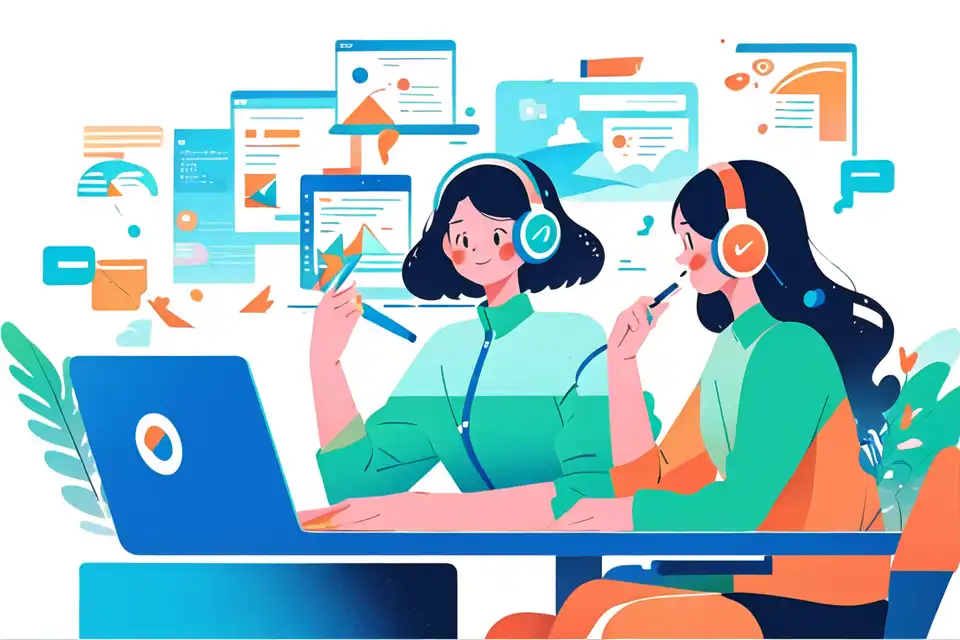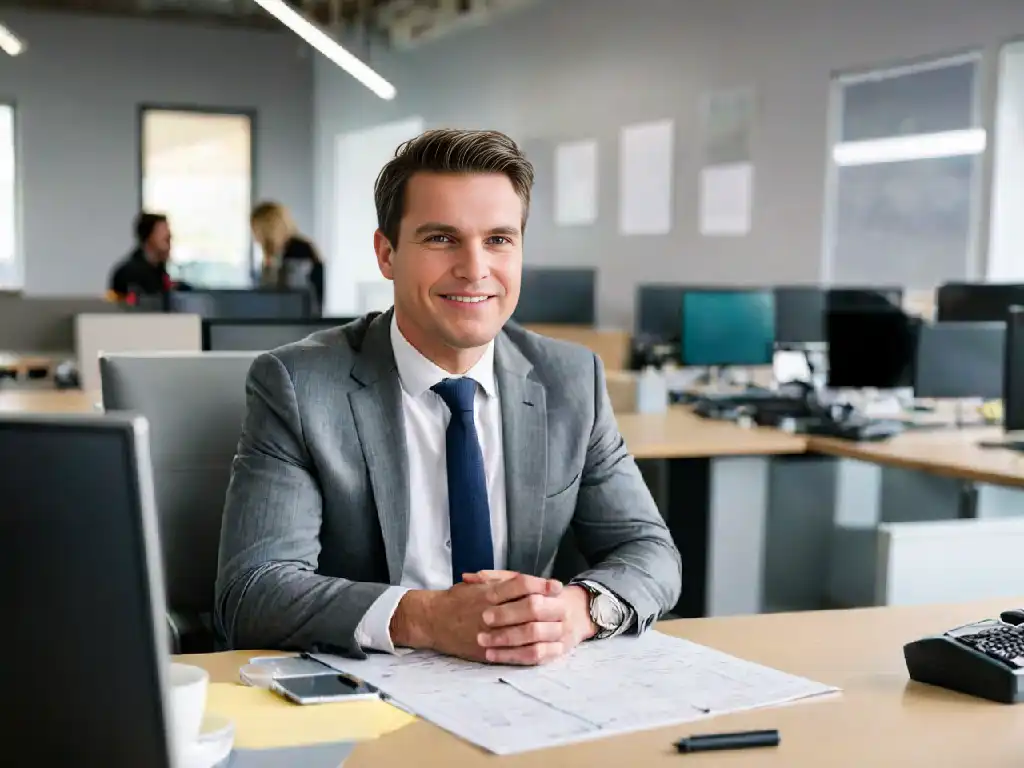Interview Questions for Creative Directors (with Top Questions and Answers)
Mastering the Art of Job Interviews for interview questions for creative directors: Job Interview Examples and Insights
Try Lark for Free
Establishing a strong foundation for understanding the expectations and preparation required for a Creative Directors interview is vital for success in securing this esteemed role.
The position of a Creative Director holds substantial significance within any organization, often acting as a visionary who spearheads the conceptualization and execution of innovative design strategies. This guide is designed to provide in-depth knowledge and actionable advice, helping candidates navigate the creative industry's rigorous interview process with confidence and poise.
Understanding the creative directors role
Aspiring Creative Directors must have a comprehensive understanding of the role's multifaceted nature to portray themselves as viable candidates.
The role of a Creative Director encompasses an array of responsibilities that extend far beyond just overseeing design projects. Candidates must recognize that they are expected to be strategic leaders, inspiring and empowering creative teams while aligning their efforts with the organization's overarching goals. Furthermore, being well-versed in navigating the delicate balance between creativity and commercial objectives is essential for success in this role.
Candidates should highlight their proficiency in areas such as strategic thinking, team management, and the ability to cultivate a cohesive creative vision. Possessing strong interpersonal and communication skills is equally crucial as Creative Directors often act as liaisons between cross-functional teams and external stakeholders.
Use Lark for video interviews and candidate tracking.
How to prepare for a creative directors interview
Efficient preparation plays a pivotal role in a candidate’s success during a Creative Directors interview. Attention to detail and thorough background research are essential components of the preparation process.
Step 1: Research the Company and Industry
Thorough research of the hiring company and the wider industry landscape is essential. Demonstrating a nuanced understanding of the company's ethos, mission, and creative aesthetic will showcase genuine interest and commitment. Moreover, staying abreast of industry trends, competitor positioning, and emerging technologies can significantly bolster a candidate's credibility during the interview process.
Step 2: Prepare Your Portfolio and Case Studies
Crafting a compelling portfolio that underscores your ability to conceive and execute innovative design concepts is imperative. Your portfolio should highlight a diverse range of projects, effectively demonstrating your adaptability across various mediums and styles. Additionally, articulating the strategic rationale behind each project and its impact can provide valuable insights into your design approach and problem-solving capacity.
Step 3: Rehearse and Refine Your Storytelling Technique
Effective storytelling can elevate a candidate's interview performance. Practice articulating your professional journey, emphasizing key achievements, challenges overcome, and collaborations that have shaped your creative perspective. Telling engaging, succinct, and impactful stories can leave a lasting impression and reinforce your suitability for the role.
Top 5 interview questions for creative directors and how to answer them
Anticipating and effectively addressing pivotal questions is instrumental in leaving a lasting impression on interviewers.
Question 1: "Discuss a project where you faced a significant creative challenge. How did you approach it?"
Importance of the Question: This question aims to assess the candidate's problem-solving prowess and their ability to navigate complex creative hurdles. Interviewers will be keen to identify a candidate's resilience and innovation in the face of adversity, ensuring they are well-equipped to handle challenges inherent in the role.
Elements of a Strong Answer: An effective response should outline the specific challenge, the candidate's approach to resolution, and the subsequent positive outcomes. Emphasizing collaborative efforts, strategic decision-making, and the broader impact of the solution can significantly enhance the answer's depth and resonance.
Sample Answer: "During my tenure at Company X, we encountered a critical project phase where conflicting creative visions threatened to derail our progress. I initiated cross-departmental brainstorming sessions, fostering an atmosphere of open dialogue and collaborative problem-solving. By aligning our diverse perspectives and leveraging each team member's unique strengths, we not only overcame the impasse but also delivered a breakthrough solution that garnered industry accolades."
Question 2: "Can you describe a scenario where you had to manage a creative team with conflicting ideas or personalities?"
Importance of the Question: This question seeks to evaluate the candidate's leadership and conflict resolution capabilities. Responding effectively demonstrates the candidate’s ability to foster collaboration, resolve disputes, and maintain a cohesive creative environment.
Elements of a Strong Answer: A compelling response should showcase the candidate's diplomatic and mediating skills, emphasizing strategies employed to reconcile conflicting viewpoints while sustaining team motivation and productivity. Illustrating the positive outcomes resulting from effective team management is essential in conveying the candidate's proficiency in handling diverse personalities and ideas.
Sample Answer: "In a recent project, my team encountered divergent design perspectives that were impeding our progress. I facilitated open discussions, encouraging each member to articulate their rationale to the group. By highlighting the common ground and integrating the varying ideas strategically, we crafted a cohesive solution that not only surpassed our client's expectations but also fostered a more harmonious working dynamic moving forward."
Question 3: "How do you stay updated with the latest design trends and technology advancements?"
Importance of the Question: This question aims to gauge the candidate's commitment to ongoing learning, adaptability to emerging trends, and their proactive approach to integrating new technologies into their creative process.
Elements of a Strong Answer: A compelling response should emphasize the candidate's proactive learning initiatives, such as attending industry workshops, engaging with design communities, and maintaining an active online presence. Highlighting instances where the candidate's adoption of new trends or technologies resulted in notable project enhancements can underscore their relevance and competence.
Sample Answer: "Remaining at the forefront of design innovation is integral to my approach. I regularly attend industry seminars and engage with design communities to stay abreast of emerging trends. Recently, embracing VR technology in a project not only elevated the user experience but also exemplified our responsiveness to evolving consumer preferences."
Question 4: "Tell us about a project that did not go as planned. What did you learn from it?"
Importance of the Question: This question assesses the candidate's ability to introspect, learn from failures, and adapt their approach based on past experiences. Interviewers seek insights into the candidate's resilience, humility, and capacity for constructive growth.
Elements of a Strong Answer: An effective response entails candidly narrating the project's challenges, the associated learnings, and the subsequent improvements implemented to avert similar issues. Emphasizing a proactive, solution-oriented mindset and the positive impact of the derived learnings can demonstrate valuable growth and maturity.
Sample Answer: "We encountered an unforeseen market shift during a product launch that necessitated a rapid repositioning of our creative strategy. This experience reinforced the importance of ongoing market analysis. Subsequently, we established a more agile strategic framework, enabling swift adaptability to dynamic market dynamics and ensuring a more robust go-to-market approach."
Question 5: "How do you ensure that your creative team’s work aligns with the client's vision and requirements?"
Importance of the Question: This question evaluates the candidate's client-centric approach and their ability to harmonize creative endeavors with client expectations. Interviewers aim to assess the candidate's client management skills, the strategic alignment of creative output, and the delivery of tailored solutions.
Elements of a Strong Answer: A potent response should emphasize the candidate's client-oriented ethos, deliberate communication strategies, and the development of collaborative workflows. Highlighting successful instances of aligning creative outputs with diverse client visions can underscore the candidate's adaptability and empathy.
Sample Answer: "Understanding the client's brand ethos and core objectives forms the foundation of our creative process. I foster open dialogue and employ comprehensive client briefs to ensure a holistic understanding of their vision. Demonstrating tangible value to the client through iterative feedback loops and meticulous attention to their requirements has consistently resulted in seamless alignment and strengthened client relationships."
Learn more about Lark x Employment
Do's and don'ts for creative directors interviews
A distinct understanding of the best practices and pitfalls to avoid can significantly enhance a candidate's interview performance.
Do's
- Showcase Leadership Skills: Confidently articulate instances where you led and inspired a creative team, highlighting the positive outcomes of your leadership.
- Demonstrate Creative Problem-Solving: Illustrate your capacity to navigate complex challenges with innovative, strategic solutions that drive tangible impact.
- Discuss Collaboration and Communication Skills: Emphasize your ability to foster cohesive, high-performing teams through effective communication and collaboration initiatives.
Don'ts
- Avoiding Responsibility for Failures: Acknowledge past challenges and demonstrate a constructive approach to overcoming setbacks, showcasing resilience and growth.
- Disregarding Feedback from Team Members: Showcase openness to critique and collaboration, underlining the importance of comprehensive, inclusive team dynamics.
- Failing to Adapt to New Trends: Highlight your proactive approach to continued learning and adaptability, reinforcing your relevance in an evolving creative landscape.
Use Lark for video interviews and candidate tracking.
Conclusion
Armed with a thorough understanding of the multifaceted role of a Creative Director, as well as strategic guidance on preparing for interviews, you are now equipped to present yourself as a compelling candidate during the selection process. By exemplifying visionary leadership, strategic acumen, and a client-centric ethos, you can navigate the interview process with confidence and poise, positioning yourself for success in the dynamic realm of creative leadership.
Remember, a Creative Directors interview is not just an assessment of your qualifications; it is an opportunity to illuminate your professional journey, encapsulating the experiences, triumphs, and collaborative spirit that define your creative vision.
In crafting your interview responses, remember to accentuate your strengths, illustrating your adaptability, strategic thinking, and flair for innovative creativity. Good luck with your upcoming Creative Directors interviews!
Examples
Leading a team through a rebranding project for a major client, ensuring that the creative output remained aligned with the client’s brand ethos.
Implementing innovative strategies to enhance the overall user experience, resulting in a substantial increase in customer engagement.
Collaborating with cross-functional teams to introduce a fresh visual identity, effectively elevating the brand's market presence.
By harnessing these examples, candidates can underscore their transformative impact and knack for fostering effective collaboration within creative initiatives, positioning themselves as indispensable assets in the competitive landscape of creative leadership.
The practical application of such instances is crucial in illustrating a candidate's real-world proficiency in driving impactful creative strategies and fostering cohesive team dynamics.
Use Lark for video interviews and candidate tracking.
Do's and don'ts for creative directors interviews
| Do's | Don'ts |
|---|---|
| Showcase Leadership Skills | Avoiding Responsibility for Failures |
| Demonstrate Creative Problem-Solving | Disregarding Feedback from Team Members |
| Discuss Collaboration and Communication | Failing to Adapt to New Trends |
Adhering to these do's and don'ts will aid in presenting a well-rounded, proficient, and adaptable Creative Directors candidate during interviews.








